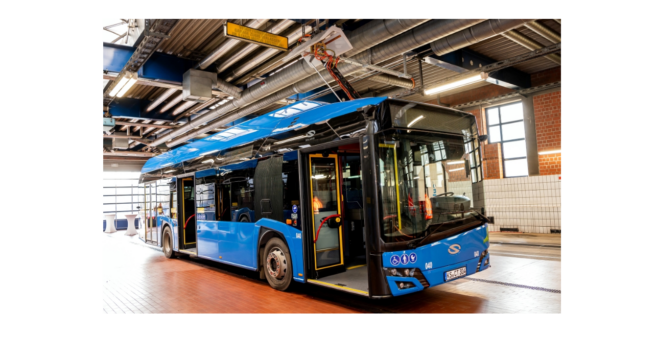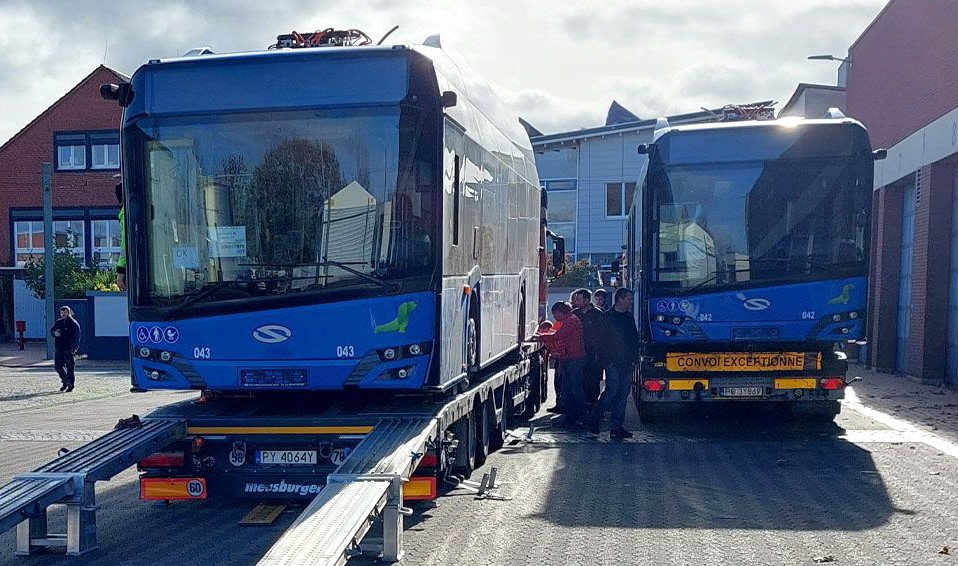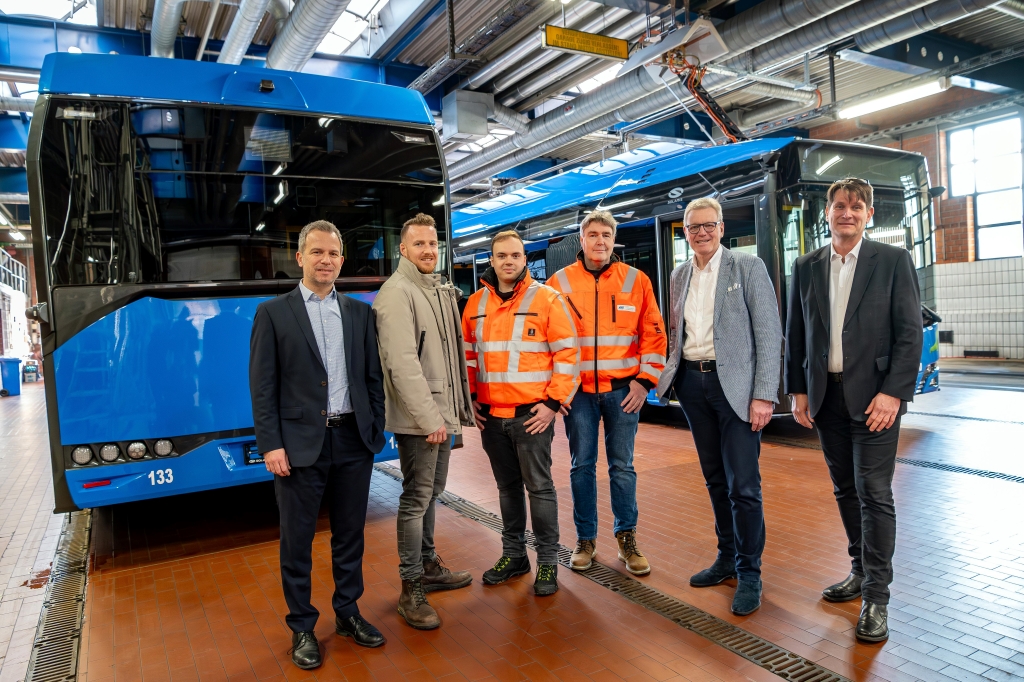
The first-time introduction of electric buses is a particular challenge for all transport companies, as the workshop and other infrastructure has to be adapted, employees in the driving and workshop service have to be trained accordingly, timetable planning has to be adjusted, etc. .
The time has just come in Kassel. Here are a few insights from the Kasseler Verkehrs-Gesellschaft (KVG), from a “workshop discussion” with representatives of the press:
At KVG, all employees had “pulled together in proven teamwork to realise the challenging e-bus project together”, emphasised KVG board member Dr Olaf Hornfeck. “We can now see the success. The buses have arrived and preparations for their regular service are in full swing. However, there is still a lot of work ahead of us before they can be put into passenger service.”
“A fully electric bus is not comparable with diesel buses,” Karten Kamutzki picked up the ball. “E-buses characterise a completely different generation of technology, comparable to the leap from the first mobile phone to the smartphone.” E-bus operation in a city like Kassel, with its steep inclines and declines and long-distance routes, is challenging, emphasised the head of KVG’s Transport and Technology division and KVG operations manager. “We’re very lucky with the weather, the snow, the freezing frost,” Kamutzki added with a wink. “Especially in this cold weather, everything is demanded of the batteries. There is probably no better time to put the performance of the buses through their paces.”
All twelve new electric buses have been delivered to Kassel by Polish manufacturer Solaris Bus & Coach since November 2023. They are eight articulated and four 12-metre buses. They offer space for 105 passengers (therof 37 seated) in case of the articulated bus and 70 (therof 25 seated) in the 12-metre bus.

Why are the buses only scheduled to start operating in a few months’ time?
“We have been using electric trams for more than 100 years. Now we are taking the first step towards an emission-free bus fleet. What is a more climate-friendly, modern form of transport for passengers means the start of a technology change for us at KVG with many new aspects for the infrastructure, the vehicles and also our employees,” says KVG board member Dr Olaf Hornfeck.
During test drives on various routes, the range of the batteries will be tested in particular. According to the manufacturer, this is at least 220 kilometres for the 12-metre buses and 170 kilometres for the articulated buses. Experience is also being gathered on influences such as weather, traffic conditions, different passenger loads (based on replacement weights), also taking into account the intermediate charging station at the “Holländische Straße” turning loop. Based on these results, the KVG is verifying the planned deployment concept for the buses in the city of Kassel.
The programme also includes the training of around 200 KVG bus drivers and the KVG workshop staff must gain routine in the daily technical handling of the buses. The future bus parking area on the new KVG site at Sandershäuser Straße 59 (formerly the Hübner site) is also being finalised. Following the commissioning of a test stand for the entire e-bus, pantograph and charging system, a new rooftop work stand will be built in the KVG bus workshop.
Why did KVG decide in favour of all-electric buses?
The twelve buses are KVG’s first step towards converting its diesel bus fleet (currently 80 vehicles) to emission-free drives by 2030, after which KVG will be able to offer emission-free transport on its eight tram and 16 bus routes. In doing so, it is making its contribution to the transport transition in Kassel. The city has set itself the goal of becoming climate-neutral by 2030. In addition, there are the requirements of the EU Clean Vehicle Directive.
Which kind of tests and analyses preceded the order?
In a major feasibility study, the KVG analysed how the introduction of the electric bus system could succeed in the city of Kassel. Among other things, it determined which requirements electric buses must fulfil for use in the city of Kassel, on which routes they can run and what the charging concept, including charging options and power supply, must look like.
In order to test the results of the feasibility study in practice, KVG tested electric buses from various manufacturers in 2022 before ordering its first twelve electric buses from Solaris in January 2023 following a Europe-wide tender.
Recent studies show that the efficiency of electric buses is higher than that of hydrogen buses. This means that fully electric buses also score highly in terms of cost-effectiveness.
How are the buses charged and which batteries do they use?
The stationary charging infrastructure on the KVG site at Sandershäuser Straße 59 is expected to go into operation in February 2024: Twelve charging points (on six double charging poles), each with a maximum output of 150 kW for night-time charging, as well as another pole with up to 350 kW in the Holländische Straße turning loop for an e-bus. The entire charging infrastructure is being built by the Dinslaken-based company SBRS GmbH.
The charging process is simple: the e-bus is driven under the mast. At the touch of a button, the driver activates the pantograph on the roof and the bus is charged fully automatically. The buses are charged in a battery-friendly manner, which increases the service life of the batteries. Until the stationary charging infrastructure goes into operation, the buses are supplied with power by mobile chargers.
The batteries are made of NMC (nickel-manganese-cobalt). The solo buses have two batteries in the rear and two on the roof, each with a capacity of 88 kWh, while the articulated buses have two batteries in the rear and four on the roof, each with a capacity of 88 kWh. The braking energy of the buses is used to charge the batteries (recuperation).
The electricity for KVG’s fully electric buses comes 100 per cent from European hydropower and regional electricity from the Stiftswald wind farm.
What about the cost for the buses and the charging infrastructure?
The twelve e-buses cost a total of around ten million euros, the charging infrastructure around 2.3 million euros. The Federal Ministry for Economic Affairs and Climate Protection (BMWI) is subsidising 80 percent of the additional costs of a new electric bus compared to a diesel bus and 40 percent of the charging infrastructure.


